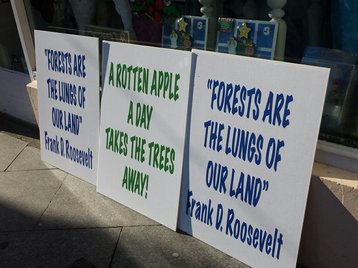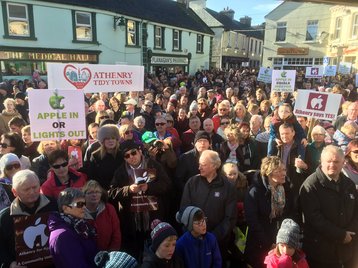Legal challenges to Apple’s plan to build a data center in County Galway in Ireland have been given leave to be heard in the Commercial Court, where they should be resolved in six months’ time.
Protesters say the proposal to build a data center in Athenry is in breach of rules about land use. Those in favor say the development is necessary to provide jobs and business, and a refusal could damage Ireland’s status as a location for tech projects, preventing foreign investment.
Others have commented that this row is drawing attention away from numerous data center developments that have been successfully approved and delivered.
Breaking the rules?
In August, the Irish planning board (An Bord Pleanála) approved Apple’s proposal to build a 25,000 sq m data center building, the first of up to eight, in a forest near Athenry. The data center was originally proposed back in February 2015, the same time as a similar €850 million investment in Denmark. That facility is slowly nearing completion, while Apple’s plan for Athenry has been contested.
Brian McDonagh, head of Ecologic Datacentres, told DCD he has no problem with Apple building a data center but he believes the decision breaches EU directives on forestry. “I would love to see Apple come to Athenry, but I don’t think they should come to Ireland and flout our planning laws, and destroy a 500 acre forest when there’s sufficient land right next door in Athenry.’
McDonagh’s complaint, and another complaint by residents Sinéad Fitzpatrick and Allan Daly, allege that Apple was granted permission to build in the forest, on land which was not zoned and should not have been available for development. McDonagh says there is sufficient land nearby which is already zoned for development.
The complaints claim that the Apple proposal uses more land than is needed (building in large gaps between the data center buildings) and is based on “bogus” requirements such as a long distance from nuclear plants, which were not required by the Denmark facility. The proposal was also allowed to skimp on contributions for public infrastructure such as lighting, McDonagh told DCD.
How many protesters?
On 6 November, a widely reported march in support of Apple took place in Athenry, with an alleged turnout of 2,000 people. ”The whole parish are united in wanting this to happen for our town,” said one #AthenryforApple tweet, accompanied by photos showing people supporting the development.
There were reports of a smaller protest against the development that day. McDonagh said 1,200 people were there for this protest, which is the highest figure we’ve seen. We have at least found a picture of placards (above).
While McDonagh claims Apple has received preferential treatment, others have warned that delays to the Apple scheme could put foreign investors off Ireland. Barry Rhodes, CEO of the neutral Irish exchange Inex, said such investment was vital.
“The whole industry wants it,” he said, adding that foreign investors would see it as “a flaw in our politics” if a small number of protesters could hold up a multi-million dollar investment.
McDonagh says his appeal is about upholding the planning process, but others have suggested a link with Ecologic’s efforts to build in Wicklow south of Dublin. Ecologic has had plans to build a 55,000 sq m (600,000 sq ft) data center in Wicklow for more than six years, but initially had trouble getting planning permission. The development is still on paper, but McDonagh told us it is now backed by un-named foreign investors.
Both appeals will be heard in March.
Garry Connolly of Host In Ireland said that the Irish planning process was robust, and an over-emphasis on Apple’s Athenry bid was distracting from Ireland’s success: ”Whilst much attention had has been drawn by the Athenry project , Facebook in Meath, Amazon, Google, Interxion, MS, Equinix, Dataplex, KeppelDC continue to be granted permissions and continued to expand.”


